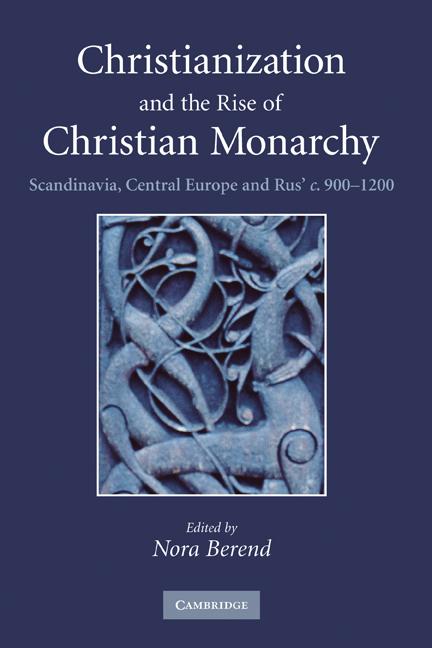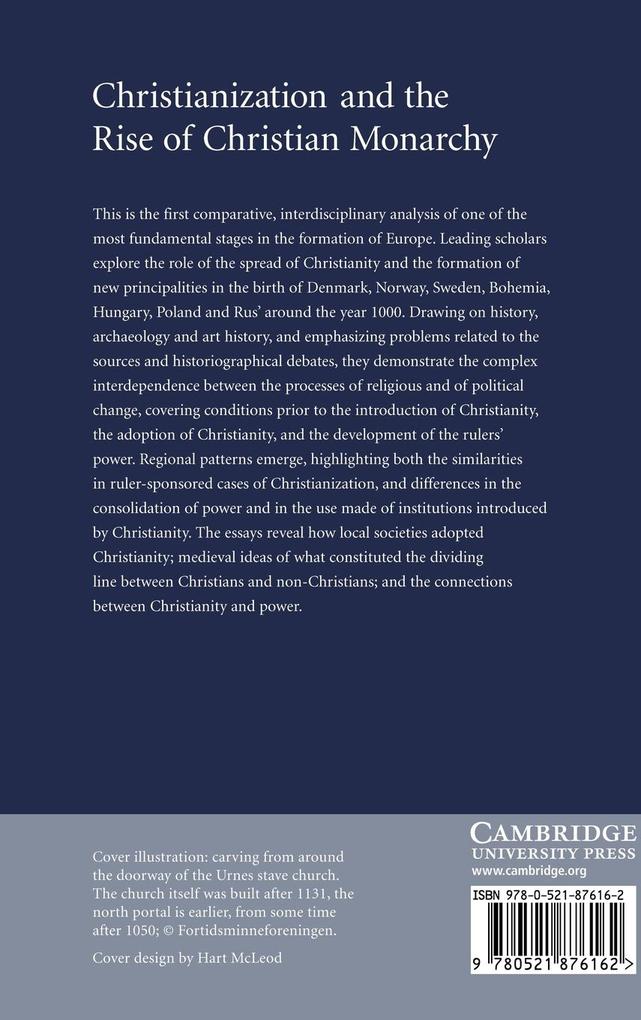
Zustellung: Sa, 07.06. - Do, 12.06.
Versand in 1-2 Wochen
VersandkostenfreiBestellen & in Filiale abholen:
This is the first comparative, interdisciplinary analysis of one of the most fundamental stages in the formation of Europe. Leading scholars explore the role of the spread of Christianity and the formation of new principalities in the birth of Denmark, Norway, Sweden, Bohemia, Hungary, Poland and Rus' around the year 1000. Drawing on history, archaeology and art history, and emphasizing problems related to the sources and historiographical debates, they demonstrate the complex interdependence between the processes of religious and political change, covering conditions prior to the introduction of Christianity, the adoption of Christianity, and the development of the rulers' power. Regional patterns emerge, highlighting both the similarities in ruler-sponsored cases of Christianization, and differences in the consolidation of power and in the use made of institutions introduced by Christianity. The essays reveal how local societies adopted Christianity and medieval ideas of what constituted the dividing line between Christians and non-Christians.
Inhaltsverzeichnis
1. Introduction Nora Berend; 2. From paganism to Christianity in medieval Europe Robert Bartlett; 3. The kingdom of Denmark Michael H. Gelting; 4. The kingdom of Norway Sverre Bagge and Sæbjørg Walaker Nordeide; 5. The kingdom of Sweden Nils Blomkvist, Stefan Brink and Thomas Lindkvist; 6. Bohemia and Moravia Petr Sommer, Dušan T eštík, Josef Žemli ka (with additional contribution by Zoë Opäíc); 7. The kingdom of Poland, with an appendix on Polabia and Pomerania between paganism and Christianity Przemyslaw Urbäczyk and Stanislaw Rosik; 8. The kingdom of Hungary Nora Berend, József Laszlovszky and Béla Zsolt Szakács; 9. Rus' Jonathan Shepard; Index.
Produktdetails
Erscheinungsdatum
18. August 2010
Sprache
englisch
Seitenanzahl
460
Herausgegeben von
Nora Berend
Verlag/Hersteller
Produktart
gebunden
Gewicht
892 g
Größe (L/B/H)
235/157/31 mm
ISBN
9780521876162
Entdecken Sie mehr
Pressestimmen
Review of the hardback: 'This volume constitutes an invaluable resource for our understanding of a crucial period in the formation of Europe.' Journal of Ecclesiastical History
Bewertungen
0 Bewertungen
Es wurden noch keine Bewertungen abgegeben. Schreiben Sie die erste Bewertung zu "Christianization and the Rise of Christian Monarchy" und helfen Sie damit anderen bei der Kaufentscheidung.











